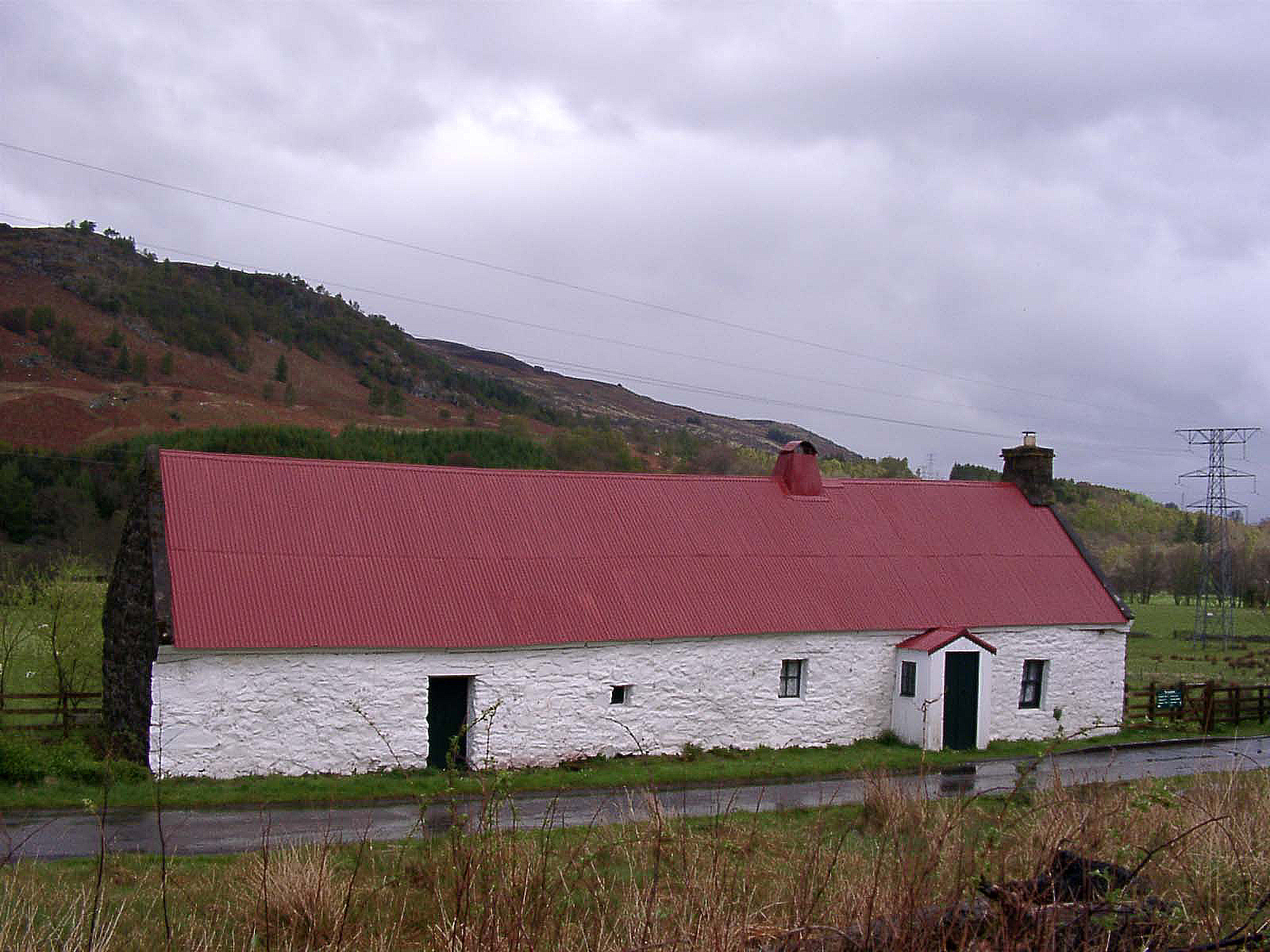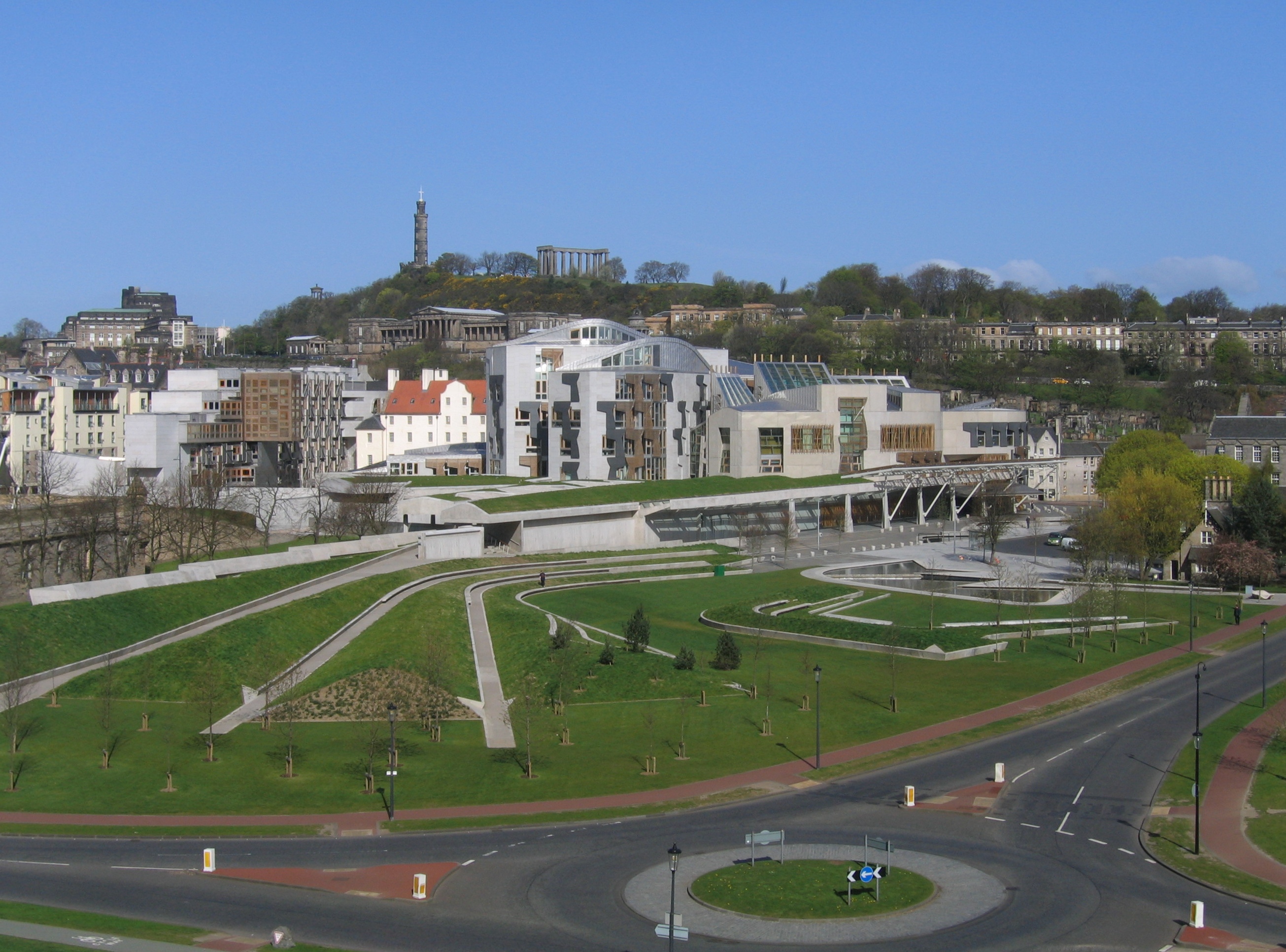|
Moirlanich Longhouse
Moirlanich Longhouse is a rare example of a cruck frame Scottish cottage. It is located at in Glen Lochay near Killin in the Stirling council area, Scotland. It is owned by the National Trust for Scotland and is open to visitors from May to September. Removal of the corrugated roof during a recent renovation revealed the remains of the original thatched roof and analysis of this has added significantly to knowledge of thatching Thatching is the craft of building a roof with dry vegetation such as straw, water reed, sedge (''Cladium mariscus''), rushes, heather, or palm branches, layering the vegetation so as to shed water away from the inner roof. Since the bulk of ... in Scotland.Holden, T G 2012 Moirlanich Longhouse, Killin: Changing techniques in thatching. Vernacular Building 35, 39-47. References External links Entry on NTS website Architecture in Scotland National Trust for Scotland properties Historic house museums in Stirling (council area) Houses i ... [...More Info...] [...Related Items...] OR: [Wikipedia] [Google] [Baidu] |
Cruck
A cruck or crook frame is a curved timber, one of a pair, which support the roof of a building, historically used in England and Wales. This type of timber framing consists of long, generally naturally curved, timber members that lean inwards and form the ridge of the roof. These posts are then generally secured by a horizontal beam which then forms an "A" shape. Several of these "crooks" are constructed on the ground and then lifted into position. They are then joined together by either solid walls or cross beams which aid in preventing 'racking' (the action of each individual frame going out of square with the rest of the frame, and thus risking collapse). Etymology The term ''crook'' or ''cruck'' comes from Middle English ', from Old Norse ', meaning "hook". This is also the origin of the word "crooked", meaning bent, twisted or deformed, and also the crook used by shepherds and symbolically by bishops. Use Crucks were chiefly used in the medieval period for structures such ... [...More Info...] [...Related Items...] OR: [Wikipedia] [Google] [Baidu] |
:en:Glen Lochay
Glen Lochay ( gd, Gleann Lòchaidh) is in Perthshire, Scotland through which the River Lochay runs eastward towards Loch Tay, joining the River Dochart at Killin. Glen Lochay is about long, running from a point north of Crianlarich to Loch Tay. A road runs up the glen as far as Kenknock Farm (at ), but there is no vehicular access beyond this point. A track leads further up the glen past cottages at Badour, then Batavaime farm (at ), the last occupied building in Glen Lochay. The ruins of cottages can be seen higher up the glen, but these were vacated long ago. The route of a walk through this "delightful and remote glen" is documented. There is an extensive local hydroelectric Hydroelectricity, or hydroelectric power, is electricity generated from hydropower (water power). Hydropower supplies one sixth of the world's electricity, almost 4500 TWh in 2020, which is more than all other renewable sources combined and ... network throughout this area, much of which is buri ... [...More Info...] [...Related Items...] OR: [Wikipedia] [Google] [Baidu] |
:en:Killin
Killin (; gd, Cill Fhinn) is a village in Perthshire in the central Highlands of Scotland. Situated at the western head of Loch Tay, it is administered by the Stirling Council area. Killin is a historic conservation village and sits within the Loch Lomond and The Trossachs National Park. It is the central settlement of the historic region of Breadalbane. Killin is notable as a historically important part of the Gaidhealtachd of Perthshire and a centre of wildlife and adventure tourism. In July 2023, Killin was voted one of the most desirable locations to live and visit in Scotland, owing to its significant history, setting and facilities by Planetware.com, an expert travel website. A recent analysis (July 2021) by a leading mental health life insurance provider identified Killin as the second-best holiday destination for wellness in the United Kingdom. Location and Etymology The west end of the village is magnificently sited around the scenic Falls of Dochart (Scottish Gae ... [...More Info...] [...Related Items...] OR: [Wikipedia] [Google] [Baidu] |
:en:Stirling (council Area)
The Stirling council area ( sco, Stirlin; gd, Sruighlea) is one of the 32 council areas of Scotland, and has a population of about ( estimate). It was created in 1975 as a lower-tier district within the Central region. The district covered parts of the historic counties of Stirlingshire and Perthshire, which were abolished for local government purposes. In 1996 the Central region was abolished and Stirling Council took over all local government functions within the area. The administrative centre of the area is the city of Stirling, with the headquarters at Old Viewforth. The area borders the council areas of Clackmannanshire (to the east), North Lanarkshire (to the south), Falkirk (to the south east), Perth and Kinross (to the north and north east), Argyll and Bute (to the north and north west), and both East and West Dunbartonshire to Stirling's southwest. The majority of the population of the area is located in its southeast corner, in the city of Stirling and in the sur ... [...More Info...] [...Related Items...] OR: [Wikipedia] [Google] [Baidu] |
Scotland
Scotland (, ) is a country that is part of the United Kingdom. Covering the northern third of the island of Great Britain, mainland Scotland has a border with England to the southeast and is otherwise surrounded by the Atlantic Ocean to the north and west, the North Sea to the northeast and east, and the Irish Sea to the south. It also contains more than 790 islands, principally in the archipelagos of the Hebrides and the Northern Isles. Most of the population, including the capital Edinburgh, is concentrated in the Central Belt—the plain between the Scottish Highlands and the Southern Uplands—in the Scottish Lowlands. Scotland is divided into 32 administrative subdivisions or local authorities, known as council areas. Glasgow City is the largest council area in terms of population, with Highland being the largest in terms of area. Limited self-governing power, covering matters such as education, social services and roads and transportation, is devolved from the Scott ... [...More Info...] [...Related Items...] OR: [Wikipedia] [Google] [Baidu] |
National Trust For Scotland
The National Trust for Scotland for Places of Historic Interest or Natural Beauty, commonly known as the National Trust for Scotland ( gd, Urras Nàiseanta na h-Alba), is a Scottish conservation organisation. It is the largest membership organisation in Scotland and describes itself as "the conservation charity that protects and promotes Scotland's natural and cultural heritage for present and future generations to enjoy". The Trust owns and manages around 130 properties and of land, including castles, ancient small dwellings, historic sites, gardens, coastline, mountains and countryside. It is similar in function to the National Trust, which covers England, Wales, and Northern Ireland, and to other national trusts worldwide. History The Trust was established in 1931 following discussions held in the smoking room of Pollok House (now a Trust property). The Trust was incorporated on 1 May 1931, with John Stewart-Murray, 8th Duke of Atholl being elected as its first president, ... [...More Info...] [...Related Items...] OR: [Wikipedia] [Google] [Baidu] |
Thatching
Thatching is the craft of building a roof with dry vegetation such as straw, water reed, sedge (''Cladium mariscus''), rushes, heather, or palm branches, layering the vegetation so as to shed water away from the inner roof. Since the bulk of the vegetation stays dry and is densely packed—trapping air—thatching also functions as insulation. It is a very old roofing method and has been used in both tropical and temperate climates. Thatch is still employed by builders in developing countries, usually with low-cost local vegetation. By contrast, in some developed countries it is the choice of some affluent people who desire a rustic look for their home, would like a more ecologically friendly roof, or who have purchased an originally thatched abode. History Thatching methods have traditionally been passed down from generation to generation, and numerous descriptions of the materials and methods used in Europe over the past three centuries survive in archives and early publica ... [...More Info...] [...Related Items...] OR: [Wikipedia] [Google] [Baidu] |
Architecture In Scotland
The architecture of Scotland includes all human building within the modern borders of Scotland, from the Neolithic era to the present day. The earliest surviving houses go back around 9500 years, and the first villages 6000 years: Skara Brae on the Mainland of Orkney being the earliest preserved example in Europe. Crannogs, roundhouses, each built on an artificial island, date from the Bronze Age and stone buildings called Atlantic roundhouses and larger earthwork hill forts from the Iron Age. The arrival of the Romans from about 71 AD led to the creation of forts like that at Trimontium, and a continuous fortification between the Firth of Forth and the Firth of Clyde known as the Antonine Wall, built in the second century AD. Beyond Roman influence, there is evidence of wheelhouses and underground souterrains. After the departure of the Romans there were a series of nucleated hill forts, often utilising major geographical features, as at Dunadd and Dumbarton Castle, Dunbarton ... [...More Info...] [...Related Items...] OR: [Wikipedia] [Google] [Baidu] |







